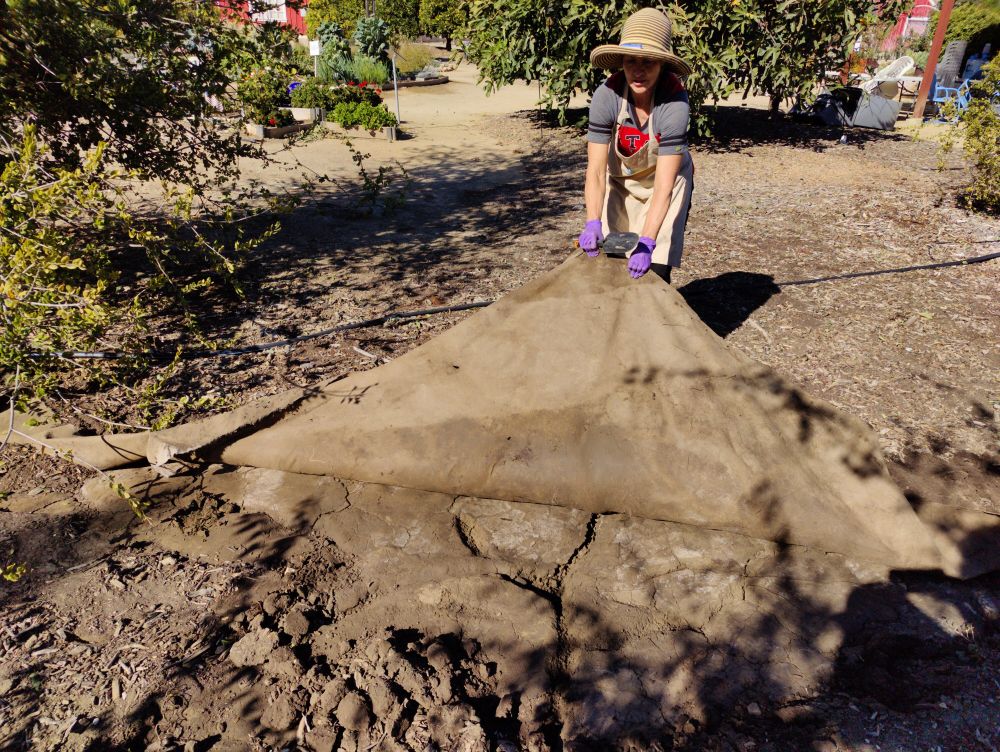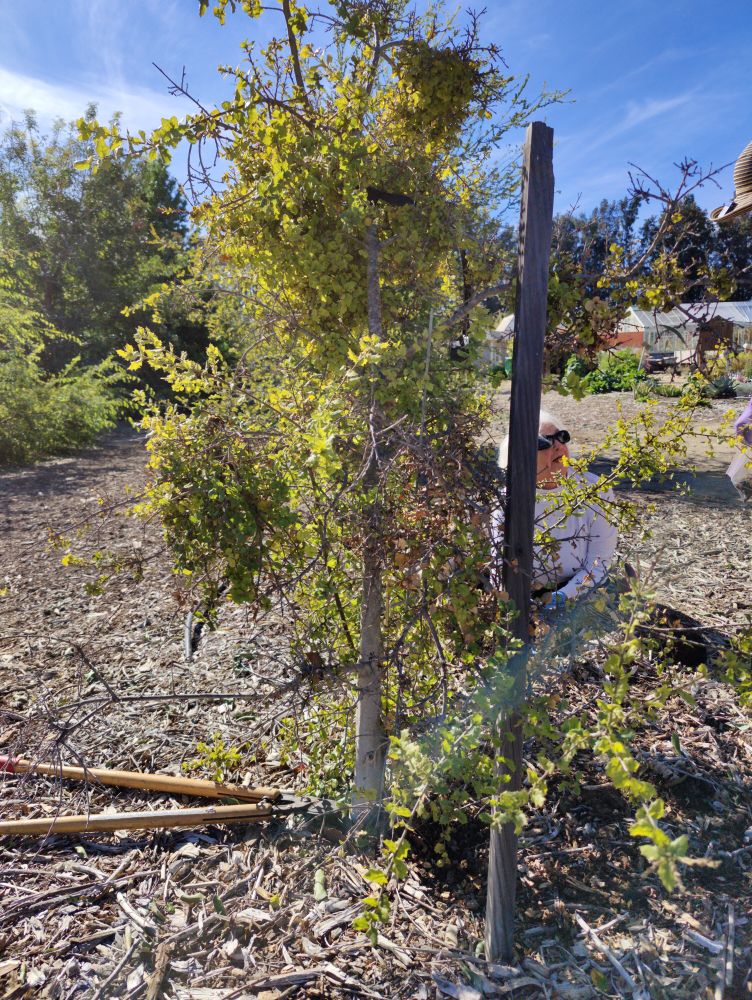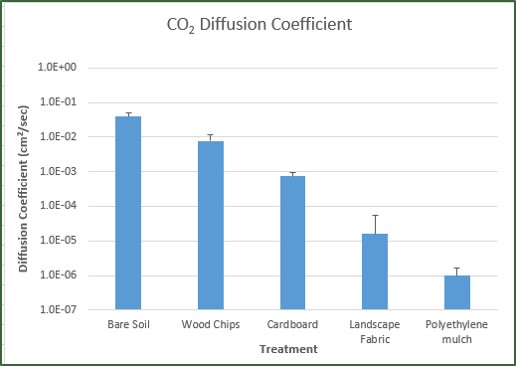I have a very interesting research project on the effects of urban pressure on Coast Live Oak (CLO). CLO is a California native oak and I am interested in seeing if urban cultural conditions prevent the development of mycorrhizal fungi on their roots. My study is blocked, that means that all the treatments occur in a block and the blocks are repeated for replication. Blocking allows the statistics to account for variability in field locations. Its a good thing too, since one of the blocks has never done well. One tree died, two are severely chlorotic etc. This was not just the effect of the urban pressure treatments, but way more severe than any other trees growing in other blocks. It turns out there was a reason… I had unwittingly planted my sapling oaks in an area of our research farm where buried landscape fabric was installed.

So most trees that were covered by the landscape fabric were chlorotic. One died and one grew normally. The one growing normally had extended roots over the top of the fabric and then grown into soil beyond the fabric. Note in the picture above a lack of roots despite adequate moisture.

How does landscape fabric hurt trees? Let me describe the mechanisms… First and foremost soil coverings reduce the ability of soil to diffuse gases, both into and out of soil. As we know from other blogs on this subject in the archive Dr. Linda Chalker Scott and colleagues conducted research on gas diffusion rates under different kinds of landscape or soil coverings. It is important to understand that gases go both ways. For roots to remain healthy, they must convert sugar to energy through the process of respiration. During chemical respiration oxygen is combined with glucose and converted into energy (for cell growth) and carbon dioxide is produced. Carbon dioxide must diffuse out of soil and oxygen diffuse into soil for this reaction to occur.

Many of our blogs have touted the benefits of coarse, fresh, arborist chips for woody plants. One of the supreme benefits is the increase in rooting under these mulches. Unlike landscape fabrics, wood chip mulches eventually modify soil actually promoting gas exchange into deeper levels. Also, landscape fabrics prevent soil arthropods and other organisms from transporting organic matter to lower levels. Think of plastics and fabrics as a suffocating blanket over root systems, they deprive roots of moisture and gas exchange and prevent soil modification and organic matter movement.
While thick, coarse organic mulches actually enhance establishment and rooting of landscape plants without limiting gas exchange they can not overcome the impact of landscape fabrics. A common practice is to lay down fabrics and then apply mulch over the fabric. This often results in a “tatty” look years later when the mulch decomposes and the fabric shows through. Landscape fabrics and weed barriers are landscape pollutants. We should be limiting the use of petroleum products in landscapes because they do not break down easily and they have a bad impact on all forms of life.

References
Cahill, A., L. Chalker-Scott and K. Ewing. 2005. Wood-chip mulch improves plant survival and establishment at no-maintenance restoration site (Washington). Ecological Restoration 23:212-213. https://www.researchgate.net/publication/303445066_Wood-chip_mulch_improves_plant_survival_and_establishment_at_no-maintenance_restoration_site
Chalker-Scott, L. and A. Downer. 2022. Garden Myth-Busting for Extension Educators: The Science Behind the Use of Arborist Wood Chips as Landscape Mulches. Journal of the NACAA 15(2). https://www.nacaa.com/file.ashx?id=6c7d4542-7481-4f0a-9508-d8263a437348
Shahzad, K., A.I.Bary, D.P. Collins, L. Chalker-Scott, M. Abid, H.Y. Sintim and M. Flury. 2019. Carbon dioxide and oxygen exchange at the soil-atmosphere boundary as affected by various mulch materials. Soil & Tillage Research 194. https://doi.org/10.1016/j.still.2019.104335
Interesting! When I started gardening at my new house I wondering why the plants in the raised beds were doing so badly. I even had gladiolas rotting away! After digging and digging I found plastic sheeting! No wonder there were no worms! It was so difficult to get that plastic up (100sq ft) And the soil underneath was gray and lifeless. What are people thinking?!?
Do you think artificial turf creates similar problems?
It’s different. It’s more porous but it is completely synthetic and has virtually no benefit to the underlying soil. It would be interesting to test its properties.
Glad to see this article — thank you. As a landscaper, I’d never use anything synthetic/plastic over soil. I’ve used newspapers (not the colored pages, tho) and then covered them w mulch. Keeps down the weeds, and you can cut into it easily if and when you decide to plant in that space.
I’m a little late to the party but so glad to see this article.
Another dangerous thing about landscape fabric is that I have observed birds attempting to strip fibers from the exposed fabric for their nests. Those tough synthetic threads could cut nestlings if wrapped about them.
In fact the fabric in the picture looks like some animal has attempted to pull fibers out. The fabric can be exposed for years without fraying like that on it’s own.
Good point.